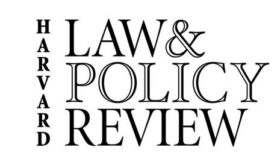By Anne King
The first decision of the Supreme Court’s 2011 Term, Cavazos v. Smith, which involved the tragic case of Shirley Ree Smith and her family, is back in the news.
Ms. Smith was convicted in the 1997 death of her seven week old grandson. Prosecutors had argued that the baby’s death resulted from “shaken baby syndrome.” The Ninth Circuit decided that habeas review was warranted because of significant problems with the evidence presented at trial, but the Court issued a summary reversal without oral argument.
But now California Governor Jerry Brown has commuted Ms. Smith’s sentence – and her lawyers say she’s planning to seek full exoneration based on new medical evidence .
Justice Ginsburg’s dissent in Smith is notable for its emphasis on the facts of the case and the nature of the evidence, which she highlighted to argue that the Court should never have granted certiorari. Supreme Court review is inappropriate, she wrote, in this “notably fact-bound case in which the Court of Appeals unquestionably stated the correct rule of law.”
Justice Ginsburg explained that the problematic medical evidence supported the Ninth Circuit’s decision. The child’s symptoms weren’t typical of shaken baby syndrome – plus, the medical community now questions whether shaking a baby alone can actually cause death. The dissent also highlighted the “meager non-medical evidence” – including no evidence of child abuse – and ineffective representation by Ms. Smith’s counsel.
Justice Ginsburg’s focus on the facts in Smith echoes her dissent last year in Connick v. Thompson – which she read from the bench, in an unusual step.
John Thompson was convicted of murder in New Orleans and incarcerated for 18 years, spending 14 on death row. After his exoneration due to the discovery of significant Brady violations, Mr. Thompson won a civil suit against the New Orleans DA’s office, and the Fifth Circuit upheld the verdict.
In reversing the lower courts, Justice Thomas’s majority opinion spent little time addressing the underlying facts of the case. The Court held that the DA’s office could not be held liable for the acknowledged Brady violations based on failure to train its prosecutors.
But Justice Ginsburg’s dissent, by contrast, offered a deep exploration of the facts to illustrate “the grave injustice Thompson suffered,” to show that the Brady violations in Mr. Thompson’s prosecution “were neither isolated nor atypical,” and to emphasize that Brady violations, in general, “are not easily detected.”
It’s well worth reading the dissent to gain a full picture of the violations that “infected” Mr. Thompson’s prosecution, and the “prosecutorial design” (Justice Ginsburg’s phrases) involved in carrying them out. The most egregious include withholding an eyewitness’s description of a murder suspect who looked nothing like Mr. Thompson, and, in a separate case, the concealment of blood samples that didn’t match Mr. Thompson’s blood type.
Justice Ginsburg’s dissents in Smith and Thompson emphasize the facts to highlight systemic problems in the justice system. These days, Justice Ginsburg is often joined in dissent by Justices Breyer, Kagan, and Sotomayor – and as the most senior member of that group she has the prerogative to assign the task of writing the dissent. And this fact makes Justice Ginsburg’s dissents in Smith and Thompson appear all the more significant.
